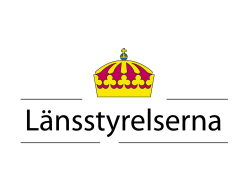Prepares and adopts a comprehensive plan and detailed development plans.
Planning process
Physical planning is a matter of deciding how land and water areas are to be used. Pursuant to the Planning and Building Act (PBL), different public interests must be weighed against each other in an open and democratic process, taking into account the rights of individuals. In Sweden, the municipalities have the main responsibility for planning.
The Swedish planning system
Pursuant to the Planning and Building Act, the Swedish planning system, consists of the regional plan, the comprehensive plan, the area regulations and the detailed development plan. The national maritime spatial planning is regulated in the Environmental Code. Only the area regulations and the detailed development plan are legally binding documents; however, the regional plan and the comprehensive plan can be seen as indicating the overall direction of the municipality over a significant time period and as guidance in the development of the detailed development plan and in the permit granting process.
The national level
Sweden has no cross-sector planning for land on the national level; however, there is national-level maritime planning. Instead, the State provides frameworks for the municipal and regional level through national objectives and by identifying claims of so-called national interest. The national transportation infrastructure planning also affects the conditions for municipal and regional physical planning. For the sea one maritime plan for each of three separate geographical zones will be developed for approval by government. The plans will cover an area from one nautical mile outside the so-called base line in the territorial sea, out to and including the economic zone. In a maritime spatial planning directive the EU has imposed the requirement that the member states are to have prepared maritime spatial plans not later than 31 March 2021, where applicable.
The Planning and Building Act also stipulates that it is the county administrative boards that safeguard and coordinate state interests in the planning process. The county administrative boards can be said to be the extended arm of the state in the different regions and the central government authorities are required to submit necessary data for this purpose to the county administrative boards, within their various areas of responsibility.
The county administrative boards are responsible for and can intervene in issues that affect national interests, environmental quality standards, inter-municipal interests and issues concerning health and safety and the risk of accidents, flooding or erosion.
The regional level
Like the national planning level, the regional planning level in Sweden is relatively limited. However, the PBL regulates the physical planning that is to take place in Region Skåne, Region Stockholm and Region Halland. Regional spatial planning is intended to be introduced in additional regions when the need for and conditions for such planning exist, as part of achieving more uniformity in the country.
The municipal level
The municipalities are responsible for the planning of land and water areas within their geographical boundaries. It is only the municipality that has the authority to adopt plans and decide whether the planning is to be implemented or not.
The comprehensive plan: overall land use
The municipality must have a current comprehensive plan that covers the entire area of the municipality. In the comprehensive plan, the municipality must present the basic characteristics of its intended use of land and water areas; how the built environment is to be used, developed and preserved; what consideration is to be given to public interests; and what the intention is regarding how national interests and environmental quality standards are to be served. The plan must also indicate how the municipality intends to take into account national and regional goals, plans, and programmes of significance for sustainable development within the municipality.
Area regulations: limited regulation
Area regulations enable the municipality to regulate the basic characteristics of its land and water use if necessary to safeguard the purposes of the comprehensive plan or to satisfy a national interest. They can also regulate the largest permissible area of a recreational home and the degree to which building permits are required for certain measures. Area regulations do not provide construction rights.
The detailed development plan: the plan with binding rights and obligations
A detailed development plan enables the municipality to regulate the use of land and water areas and what the built environment is to look like in a particular area. Detailed development plans are generally prepared when new construction is to be carried out in a dense area and often encompasses one or several city blocks. The detailed development plan regulates what are public spaces, development districts and water areas, and how they are to be used and designed.
A detailed development plan may regulate development in more detail — for example, where new buildings must or may be placed, how large or tall they may be, how much distance there must be between a building and the site boundary, and whether anyone may be granted the right to install cables over someone else's land. The stipulations in the detailed development plan are binding for adjudication of subsequent building permit applications. Individuals are accorded a utilisation right in the detailed development plan that may not be changed during the period of its implementation, which is usually 15 years. This is usually referred to as "building rights".
Who does what?
The municipality

The regional planning body

May adopt a regional plan for the entire region or a part thereof.
The body in charge of regional growth

Prepares a strategy to guide the regions' development ("RUS") and a regional plan for regional transportation infrastructure. The regions in Stockholm, Skåne and Halland are also obligated to produce a regional plan in accordance with the PBL.
The county administrative board

Safeguards and coordinates state interests.
The National Board of Housing, Building and Planning

Is responsible for following up the application of the Planning and Building Act, and provides guidance and advice.
For further information, please contact Boverket.
